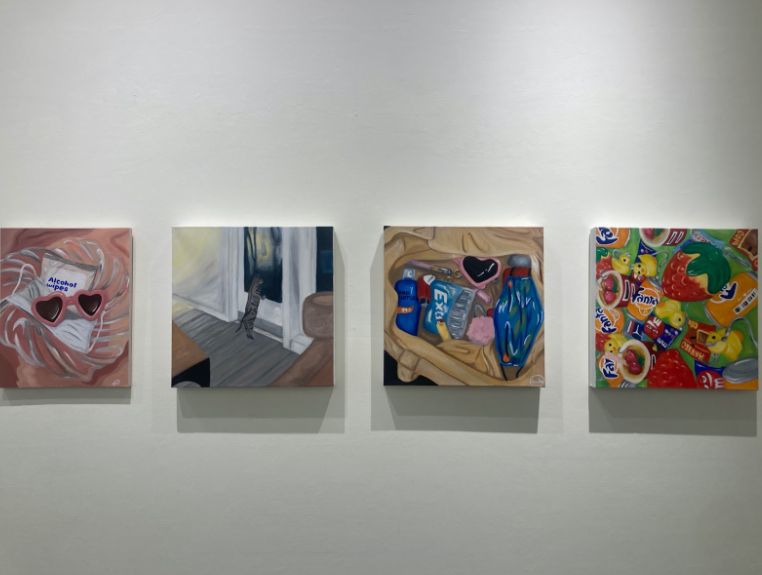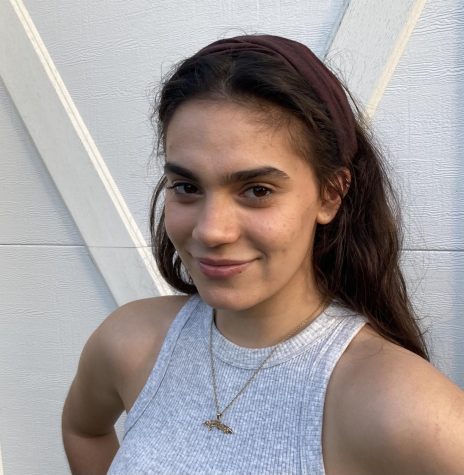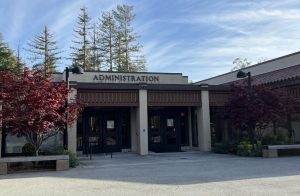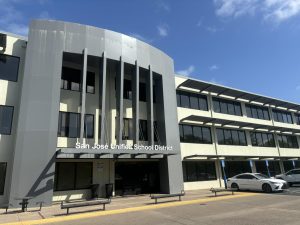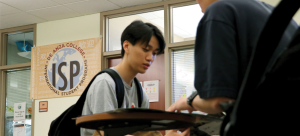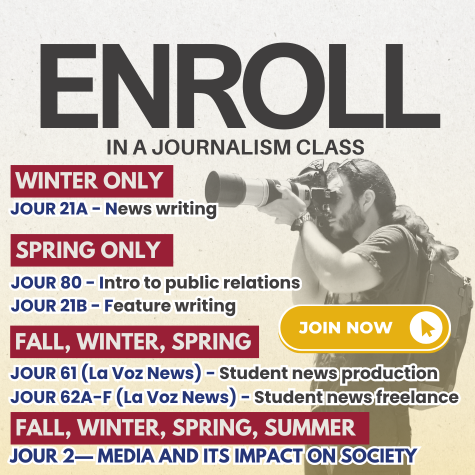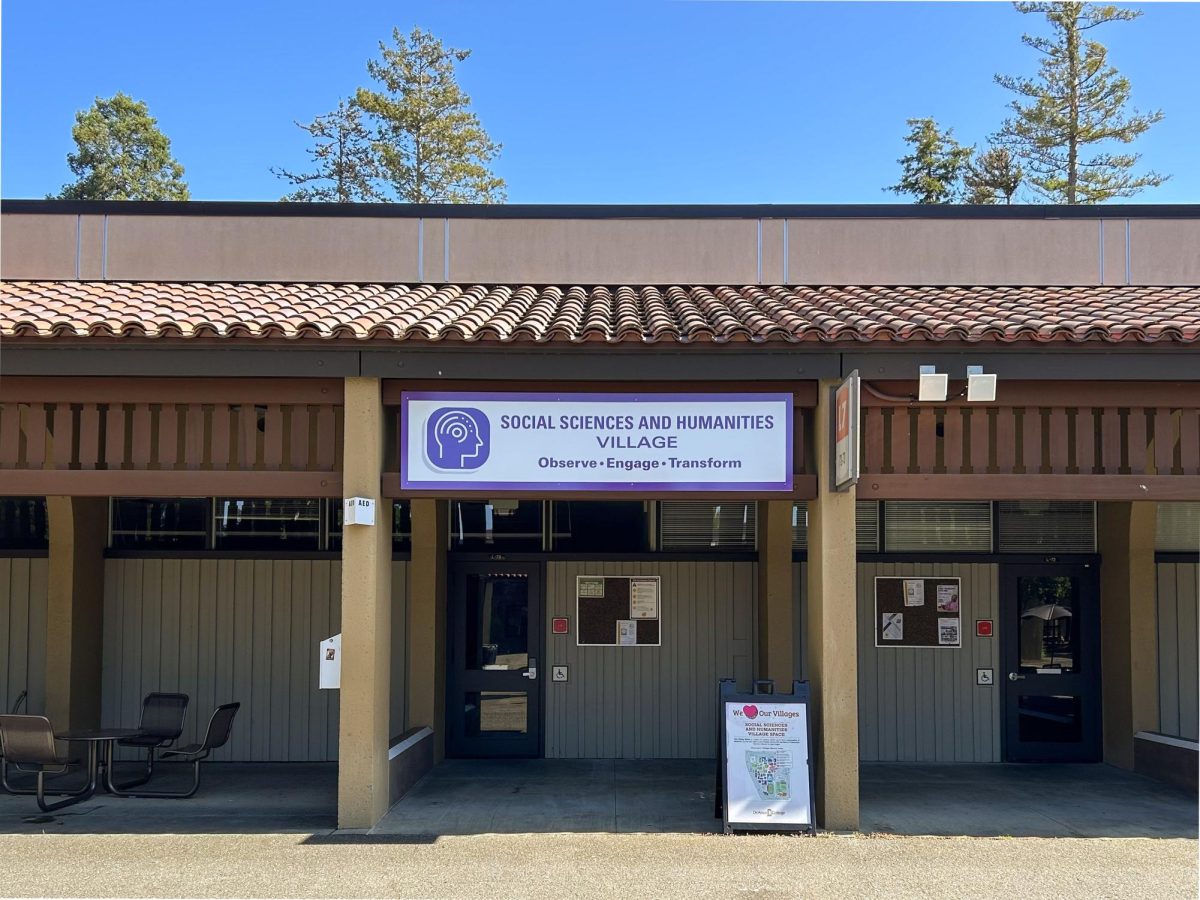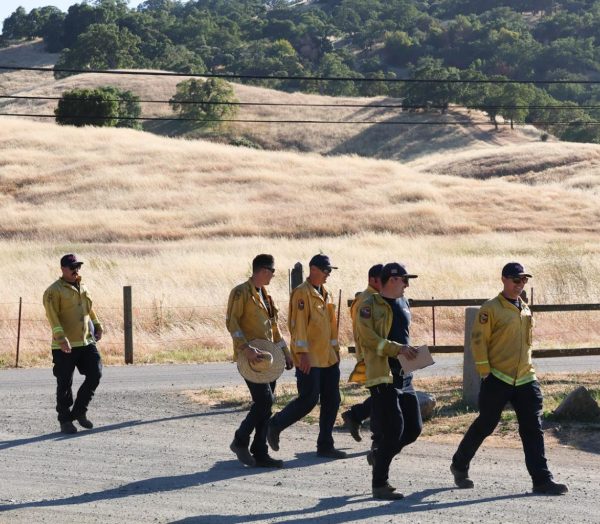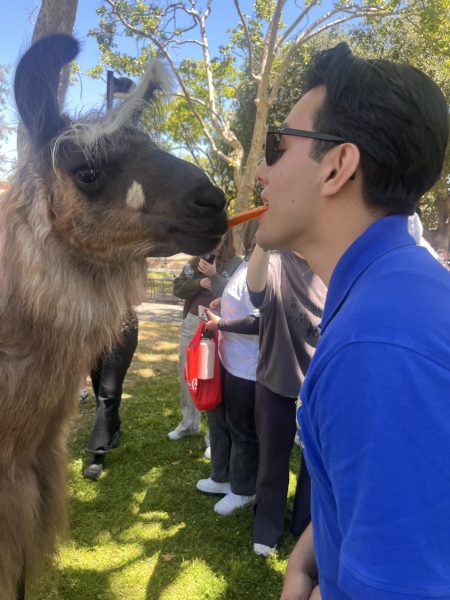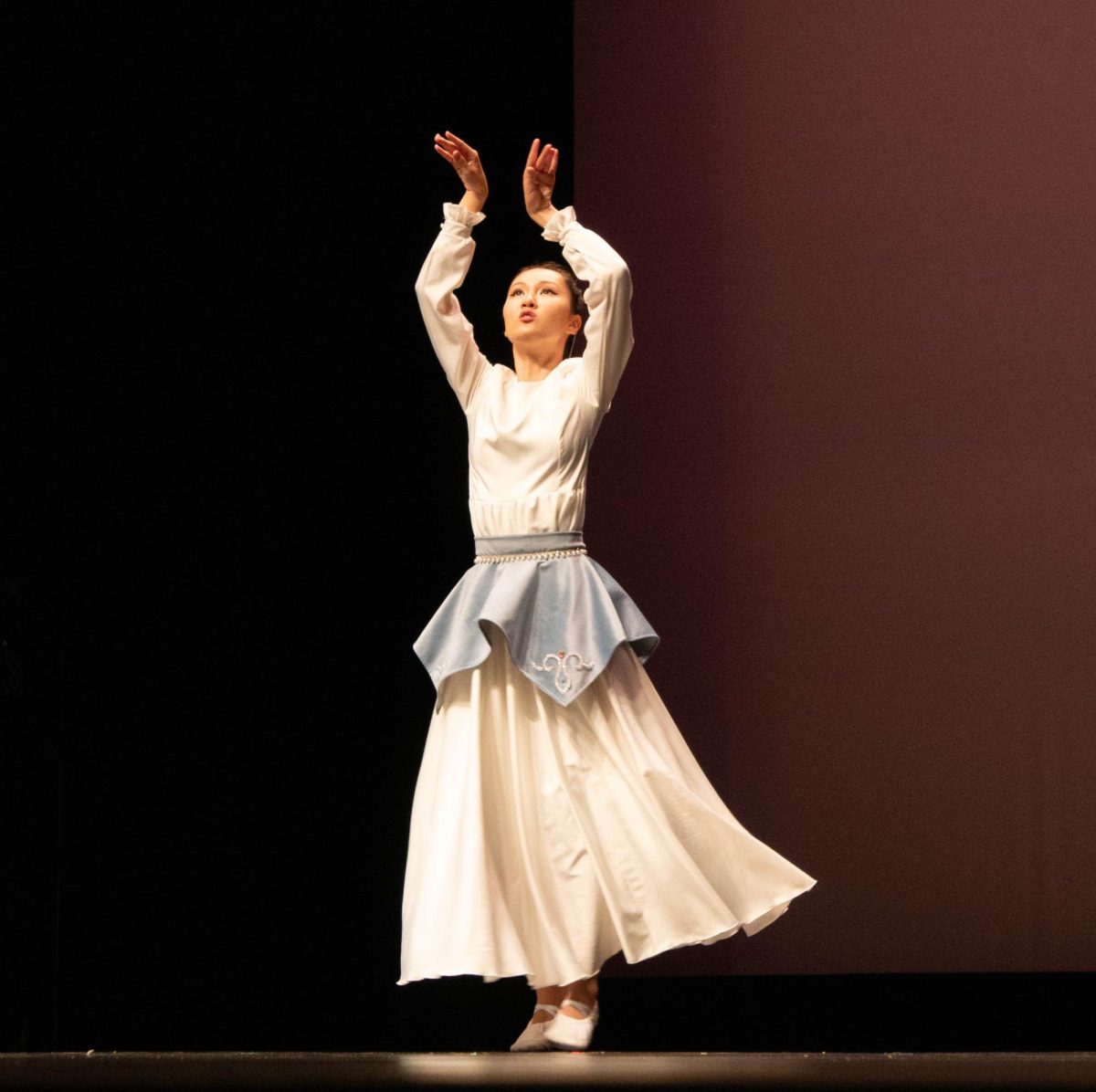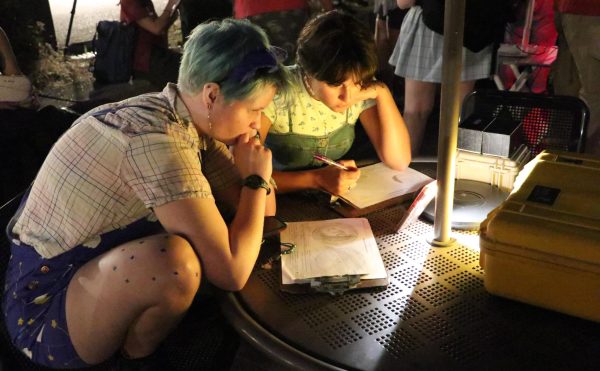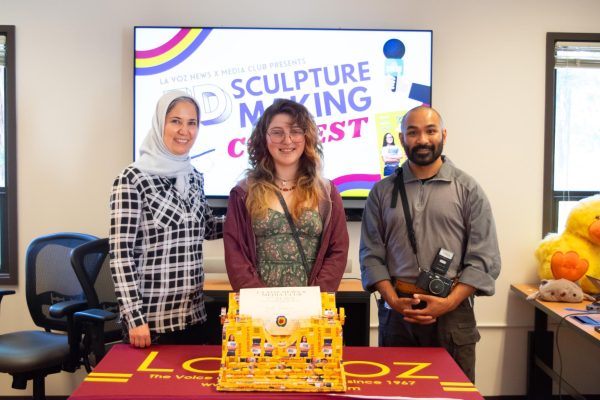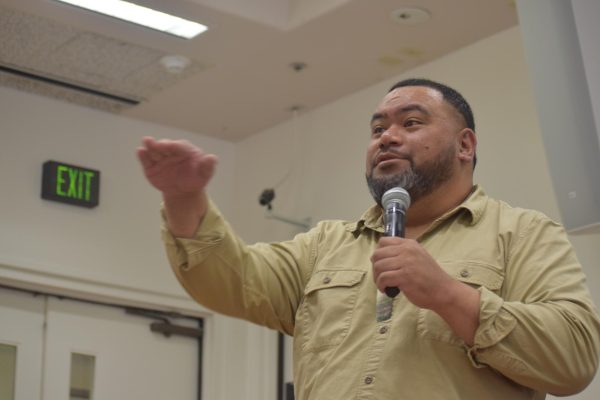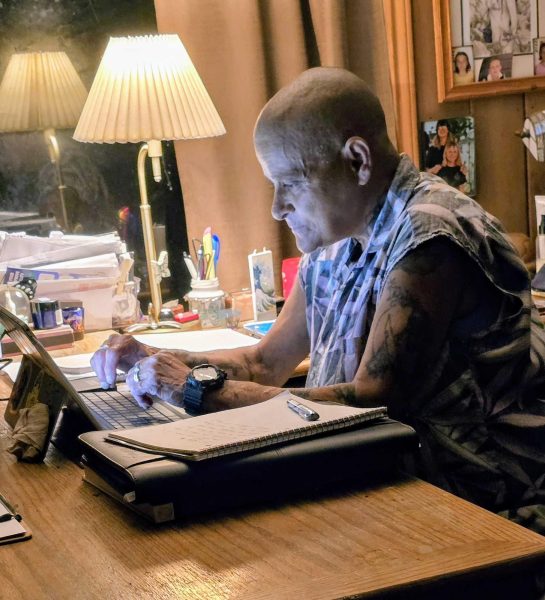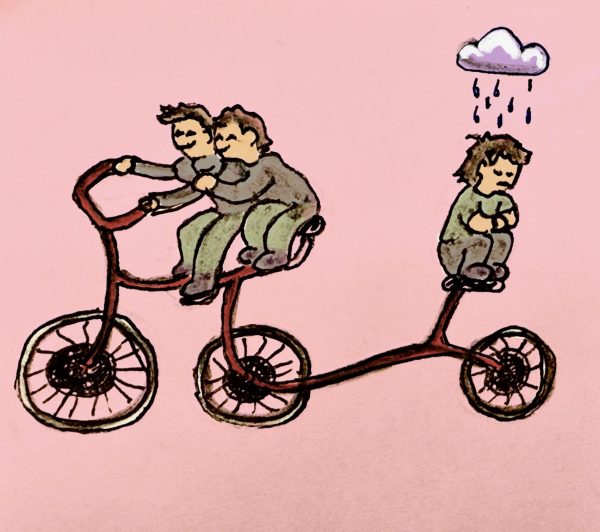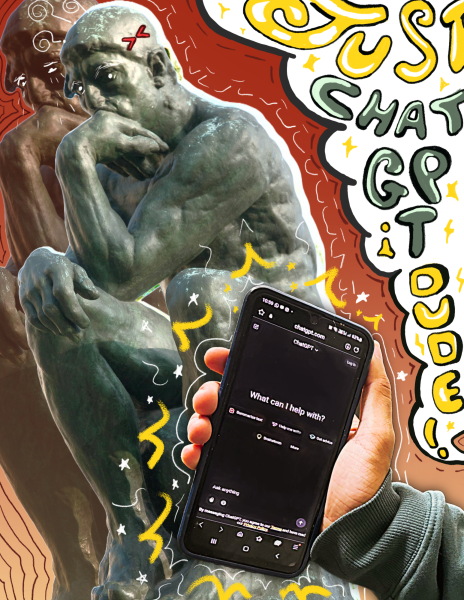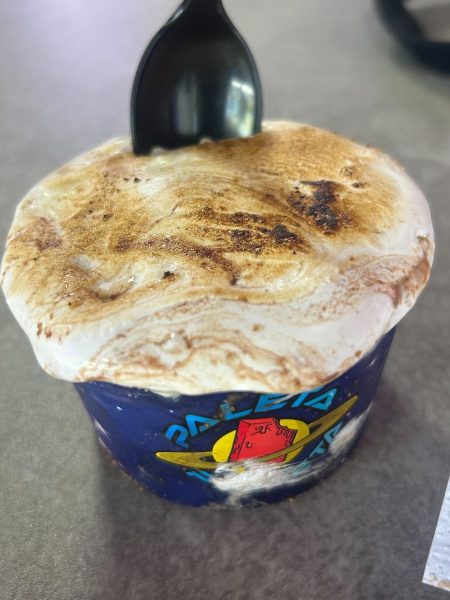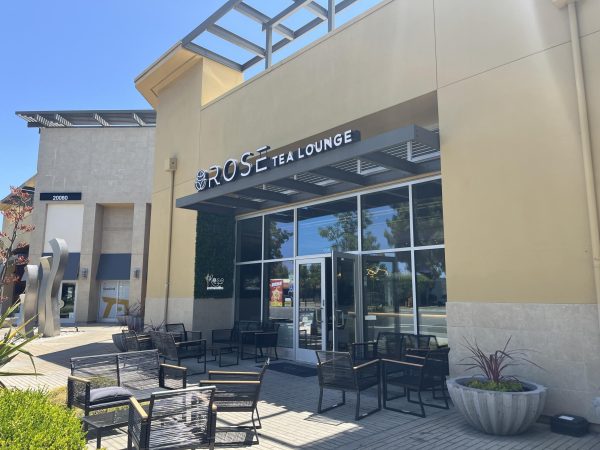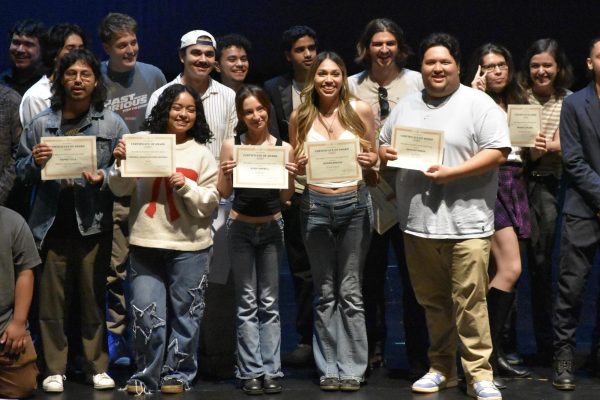Euphrat Museum’s ‘Unframed’ exhibit highlights the pandemic’s impact through student artwork
Artwork by Audra O’Reilly showcases at the Euphrat Museum. From left to right, “Stay Safe,” “Cleo,” “New Normal,” and “Shop Small.”
June 29, 2022
De Anza’s Euphrat Museum opened “Unframed,” a student art exhibit, in collaboration with the Fine Arts League of Cupertino from April 27 to May 31, featuring student artwork in a variety of mediums, from sculptures to paintings. With a focus on resilience and reflections on the pandemic and its impact, the Euphrat Museum spotlighted student creativity in a highly unusual era.
Diana Argabrite, the Director of Arts and Schools and the Museum Programs Coordinator, announced to faculty that she was putting together a show and students could volunteer through their art classes to have their work displayed. “Unframed” was a free, non-juried exhibition, and was open to De Anza students and employees.
With the pandemic’s recent economic impacts, Argabrite did not want De Anza art students to face any kind of fiscal barriers, saying she did not want them to spend “a dime” on entering or taking part in her art show.
“A lot of times, there’s the pressure of buying frames and mats and all that stuff. Everything here is put up only with screws in the wall and magnets,” Argabrite said. “It also feels like the world is a little unframed. Like we’re trying to pull it together, you know, and put up a show, but we’re really just a little bit odd: unframed.”
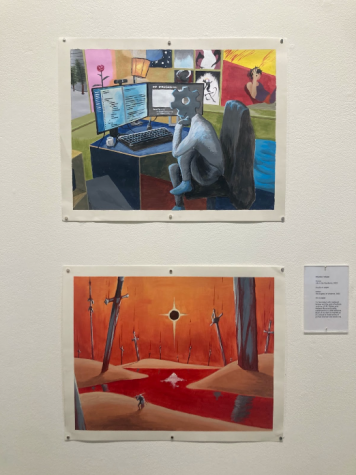
Charles Haiwen, 21, painting major reflected on his experience with the pandemic, and how it translated into his work for “Unframed.”
“I feel more compelled to be individualistic and to be personally expressive. Quarantine has led to lots of introspection and a degree of separation between myself and those I know or have once known, and that there is an immense sense of loneliness which strikes me occasionally,” Haiwen said. “I do not like to let such negative personal feelings obstruct my work, but I cannot also deny that such aesthetics could not be compelling, pleasing, or even romantic to me or my audiences, which is why they have sometimes shown up in my traditional media works.”
Pre-pandemic, there were typically around 80 students participating in an art show at the Euphrat Museum, but in this project, approximately only 20 students participated.
“On the turn-in days, there really weren’t enough students. So I was like, okay, show me what else you got. They brought whatever was alive for them,” Argabrite said.
One student, Audra O’Reilly, 24 and an art major, created so much art throughout the pandemic that she made her own website to sell it.
“This pandemic actually gave me a strong, painful push to pursue my artistic career. As the pandemic started, I was fired and forced into a very isolated living situation due to a high-risk family,” O’Reilly said. “This was very hard for me mentally but focusing on my online art classes helped me escape. I made so much art I didn’t know what to do with it.”
Throughout the pandemic, De Anza has hosted several online shows. Last November, Director Argabrite held the first in-person show since the beginning of the pandemic, but said it wasn’t very well attended due to the campus being closed. “Unframed,” on the other hand, has seen better attendance.
“It’s better than it was before. It gets a little better with each quarter,” Argabrite said. “The interesting thing I learned is that some of the students had never been on campus before. One student was just about to graduate with his two-year photography degree. He had never met
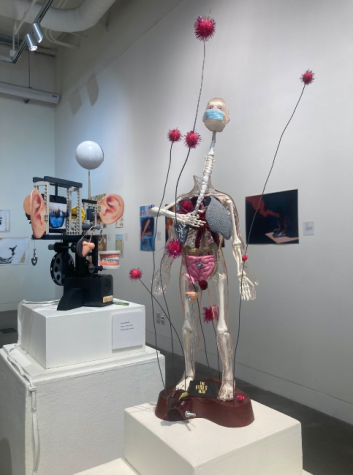
a single professor in person. So I was like, gosh. I just find that sad.”
O’Reilly described her experience showcasing her art at the Euphrat Museum and how it made her feel emotional looking at the reception.
“I watched people admire the work on display. I got the very unique experience of being able to watch someone view my art without them knowing I made it,” O’Reilly said. “That feeling made me emotional in a very good way. I wanted my work to feel personal, like you’re looking right through my eyes, and I really felt like that was achieved.”
Even with the supplemental work that students turned in, there was not quite enough to complete the display. Argabrite put together a special project and reached out to a community group that in the past, she said, had been very responsive and seemed incredibly passionate, jumping at any opportunity to create.
The special project was a partnership with the Fine Arts League of Cupertino. Artists painted butterflies in a unique background of their choice; they signify transformation and resilience.
Argabrite emphasized that much of the art displayed in “Unframed” was a response to the pandemic.
“To me it says a lot about the power of art that you can start a conversation about an issue. Maybe you know, first it gets expressed in art, and then you look at it and you’re able to start to think about it,” Argrabrite said. “Art is super important to mental health. It’s not just pretty.”



